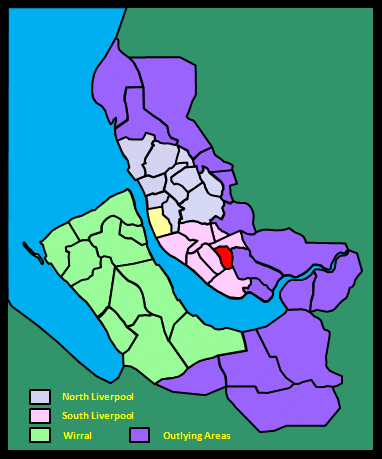 |
Woolton Village
A view from Woolton Wood, including St. Peter's church. Mentioned in the Domesday Book, Woolton owes its more recent growth to the sandstone quarrying that began in earnest in the 19th century as a result of the demand by the nouveau riche for ostentatious dwellings and imposing churches. The village is a conservation area so that the original tiny workers' cottages have been appropriately cared for and are are now greatly sought after, with prices to fit. The district known earlier as Much Woolton covered a much larger area. |
 |
Much Woolton in Lewis's Topographical Dictionary of England (1848)
The ancient name Wolveton points to a Saxon proprietor, Wolf, of whom, however, there is no record. [...] The chapelry comprises 930 acres, and is beautifully situated amidst hill and dale; the air is salubrious, and mansions of the wealthy abound. [...] The views are extensive from the higher grounds, including the course of the Mersey, the Cheshire hills, and the mountains of Wales. A large stone-quarry is wrought. The chapel, dedicated to St. Peter, is a handsome structure of stone, with a tower and small dome; it was erected in 1826, and enlarged in 1840. |
Much Woolton in the Victoria History of the County of Lancaster (1907)
This township [...] consists of park-like country on the southern slopes of a ridge which runs north-west and south-east. The village of Much Woolton with its residences, grounds, park, and golf-links occupies the greater portion of the township. The eastern portion is devoted to agriculture, crops of corn, potatoes, turnips, and hay thriving in the shelter of the wooded hillside. The good and wide roads are pleasantly shaded by trees. [...] A wake used to be held on the Green on Midsummer Day. A cross formerly stood in the centre of the village; the remains were standing until 1900. [...] Two windmills are shown in a plan of 1613, but only one now exists, and that is in ruins. There is a fine sandstone quarry. |
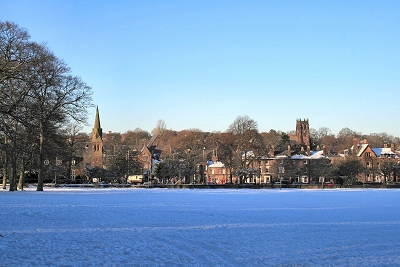 |
Woolton Village from Woolton Wood in Winter |
 |
 |
A Distant View of St. Peter's Church |
 |
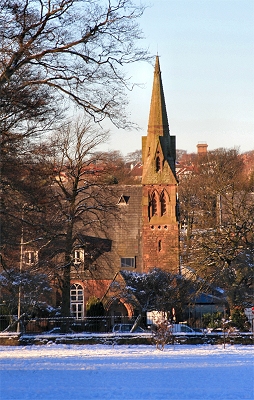 |
St. James's Methodist Church
The former church is now a nursing home. |
 |
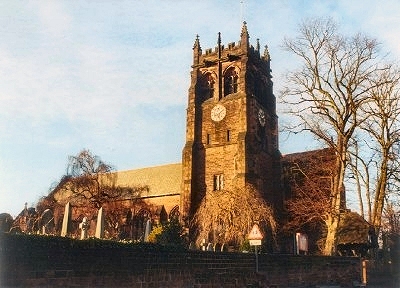 |
St. Peter's Church
The present grand sandstone church, one of Liverpool's largest parish churches, was completed in 1887. It replaced an earlier chapel of 1826, described as built 'in the worst style of British church architecture'. It contains fine stained glass windows mainly by Charles Kempe but with two by William Morris. The top of the tower is reputed to be the highest point in Liverpool. The nearby church hall was the place where John Lennon and Paul McCartney first met at a fateful fˆte in 1957. |
 |
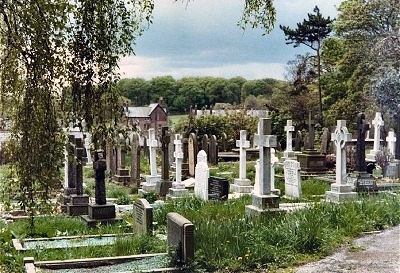 |
St. Peter's Churchyard
The resting place of Eleanor Rigby, posthumously famous thanks to the exquisite Paul McCartney song. |
 |
 |
The White Horse
On the edge of Woolton village on Woolton Street, this excellent local is deservedly popular among those, like myself, with traditional tastes in pubs. It has more or less kept its original small rooms, which definitely contributes to the appeal. |
|
 |
Woolton Hall
Woolton Hall was, like Croxteth Hall, built for the Molyneux family in 1704 by an unknown architect, though extensively modified later in the century by the famous Robert Adam. It is open for functions, but we were shown around by the friendly proprietors when we turned up (it was a very off-peak time, mind you). The inside has some impressive and atmospheric dark wood panelled rooms and an elegant Octagon Room, along with a few less in keeping modernisations. There are many portraits of old Molyneux family members and one of Robert Adam. |
|
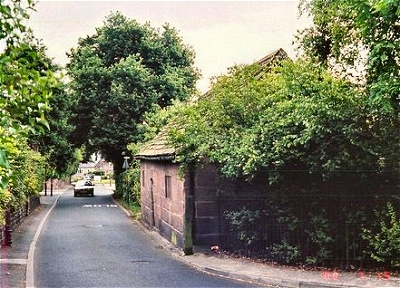 |
The Old School House
The Grade II* Listed Old School House dates from 1610. An inscription above the front door reads 'Much Woolton Old School House - The Oldest Elementary School Building in Lancashire'. My thanks to Brian Seddon for this photograph. |
|
 |
John Lennon's Home, Mendips, 251 Menlove Avenue
Mendips, 251 Menlove Avenue, in Woolton was the home of John Winston Lennon (1940-80), musician, song-writer, composer and political activist, from 1945 to 1963. He was the son of Alfred Lennon (1912-76), a merchant seaman, and Julia Stanley (1914-58). Alfred was often away at sea, which had its effect on the marriage, and he finally left Julia for good in 1942. The situation for John at home with his mother was subsequently not ideal and there was a mutually agreed arrangement that he live with Julia's sister, his aunt Mary Elizabeth 'Mimi' Smith (1906-91) at Mendips. John was brought up lovingly but strictly by Mimi, who attempted to instill middle-class values into him in contrast to the more working class background that he came from. John remained strongly attached to his mother, but she was tragically killed in a road accident outside Mendips in 1958 after being hit by a car driven by a drunken, off-duty police officer. When at Mendips, John went to Dovedale Primary School, where he was bright and bookish and began to show an interest in art. He listened to The Goon Show on the radio, which influenced his sense of humour. In 1952 he moved on to Quarry Bank High School. The band he formed there, The Quarrymen, first practiced at Mendips, but Mimi relegated them to the front porch because of the noise. His childhood experiences no doubt exerted a particularly strong influence upon his character as a mature artist. Mendips was bought for the National Trust (visits can be booked through them) by Yoko Ono and lovingly restored to an authentic 1950s condition, with period artefacts and Lennon memorabilia. Anyone who lived through the 1950s will find the time-warp eerily effective and John's presence is palpable. |
 |
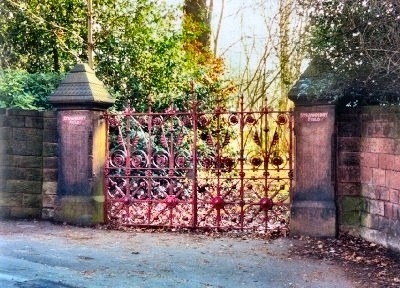 |
Strawberry Field
On Beaconsfield Road there once stood the house known as Strawberry Fields until about 1900, when it became Strawberry Field. It is famous these days as the inspiration for the Beatles song Strawberry Field's Forever (doesn't an apostrophe belong there?). The vast gothic house was built for George Hignett Warren (1819-1912), a merchant ship owner. It was acquired after his death by Alexander Cameron Mitchel (1844-1927), a South America merchant, whose widow Eliza sold the estate to the Salvation Army in 1934, a few years before her death in 1940. It was opened as a home for young girls in 1936 and, in the 1950s, boys. By 1973, the house was in a poor state of repair and was demolished. A new purpose built house was erected on the site. This closed in 2005 and it is now a church and prayer centre. John Lennon and his childhood friends used to play in the wooded grounds of the house. The words 'nothing to get hung about' in the song were inspired by his Aunt Mimi's orders not to play in the grounds, to which John replied, 'They can't hang you for it'. The words 'No one I think is in my tree', which signified John's perception of himself as on a different wavelegth from other people, may have been inspired by a tree in the garden of Mendips that he used to climb as a young boy. The gateposts and wrought iron gates survive and are a place of pilgrimage for hoards of Beatles fans from around the world. |
 |
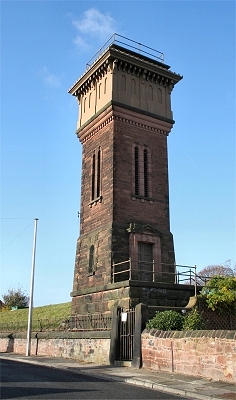 |
The Reservoir
The reservoir, on Reservoir Road naturally enough, marks the highest point at ground level in Liverpool at a vertiginous 292 ft (89 m). It was constructed in 1879-1902 and is a service reservoir, that is, one used as buffer storage to supply water on demand by gravity. It received water pumped from Lake Vyrnwy in Wales by underground cast iron pipes. The damming of the valley to produce the lake and the construction of the pipeline were major engineering feats, in which John Hays Wilson (of the Gateacre Village memorial) had a hand. All this, however, presumably failed to impress the people of Llanwddyn, whose village was flooded in the process. Reservoir construction in Wales for Liverpool's water supply continued with the flooding in 1965 of the village of Capel Celyn in Snowdonia to form Llyn Celyn. This was bitterly opposed by the Welsh, who were unsurprisingly outnumbered in Parliament, and was a seminal factor in the subsequent rise of Welsh nationalism. Controversy remains and, as I write, Liverpool City Council is poised to issue a formal apology. It is not clear which side is intended to feel better as a result. |
 |
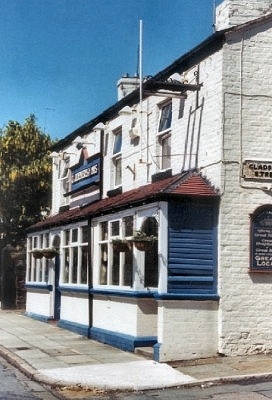 |
The Gardeners Arms
This is pleasant friendly local on Vale Road with a cosy atmosphere and Victorian-style decor. |
|
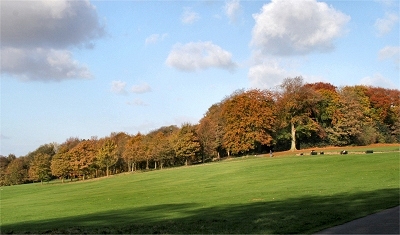 |
Camp Hill
Camp Hill is at the end of the ridge that runs out through Woolton and offers fine views over to Wales including the Clwydian Hills and, on clear days, Snowdonia and even the distant Aran mountains. A hill fort of the late Bronze Age or early Iron Age is thought to have been located here. It appears on the Yates and Perry map of 1768 as a circular enclosure. It may have been the northern outpost of the chain of hill forts stretching down through central Cheshire. The location is certainly appropriate, though very little evidence of its existence survives today. The site is thought to be around the Sunken Garden at the top of the path leading up from Hillfoot Road, although what might look like the remains of earthworks here can not be verified as such. |
 |
 |
Tobogganing on Camp Hill |
 |
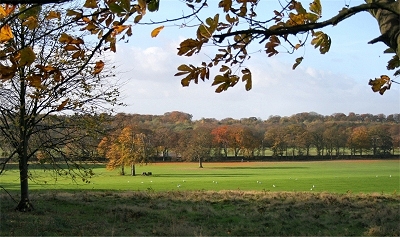 |
Camp Hill |
 |
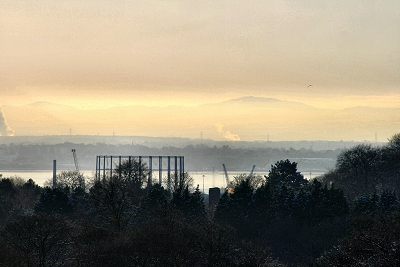 |
A distant View of Moel Fammau from Camp Hill in Winter |
 |
 |
Woolton Wood
Near to its end, the Green Belt Trail passes through Woolton Wood at this point. |
 |
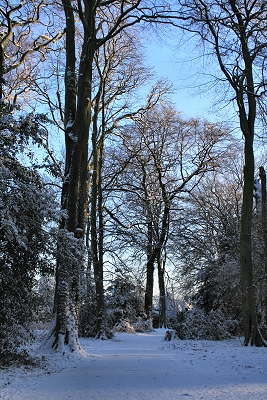 |
Woolton Wood in Winter |
 |
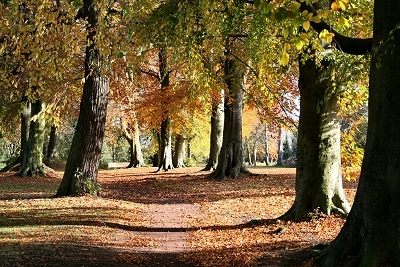 |
Reynolds Park
The location of the mansions of a number of Liverpool worthies over the last 200 years, the land was finally bequeathed to the City of Liverpool in 1929 by the Reynolds family, who were big in cotton. Mainly woodland with a central open space, there is also a walled garden and topiary yew garden. The park is among those less frequented in Liverpool and is consequently a haven of peace and quiet. The path in the picture leads down to a point from where there are expansive views to the east. |
 |
 |
Reynolds Park in Autumn |
 |
 |
The Topiary Yew Garden, Reynolds Park |
 |
